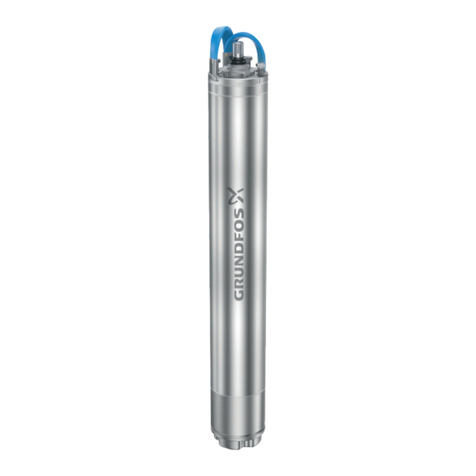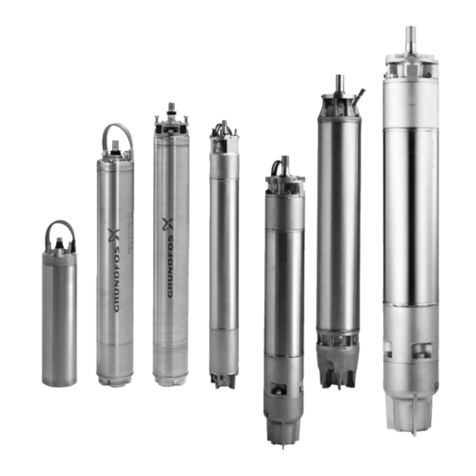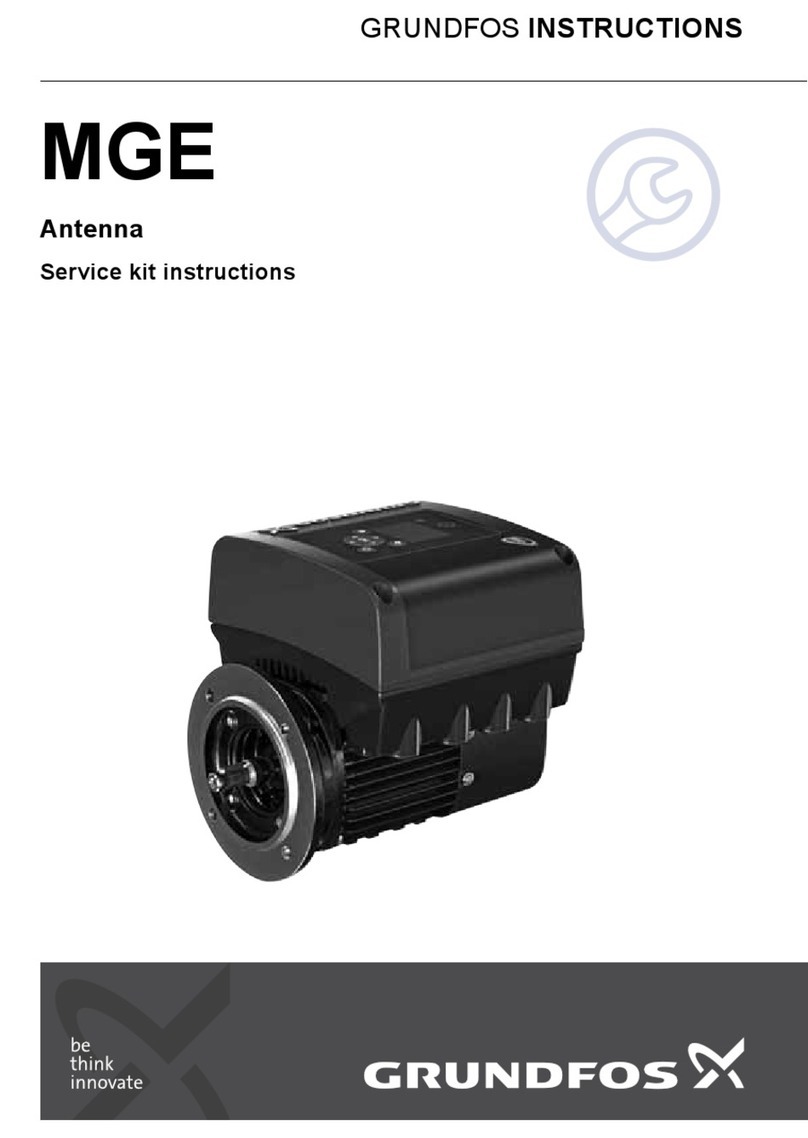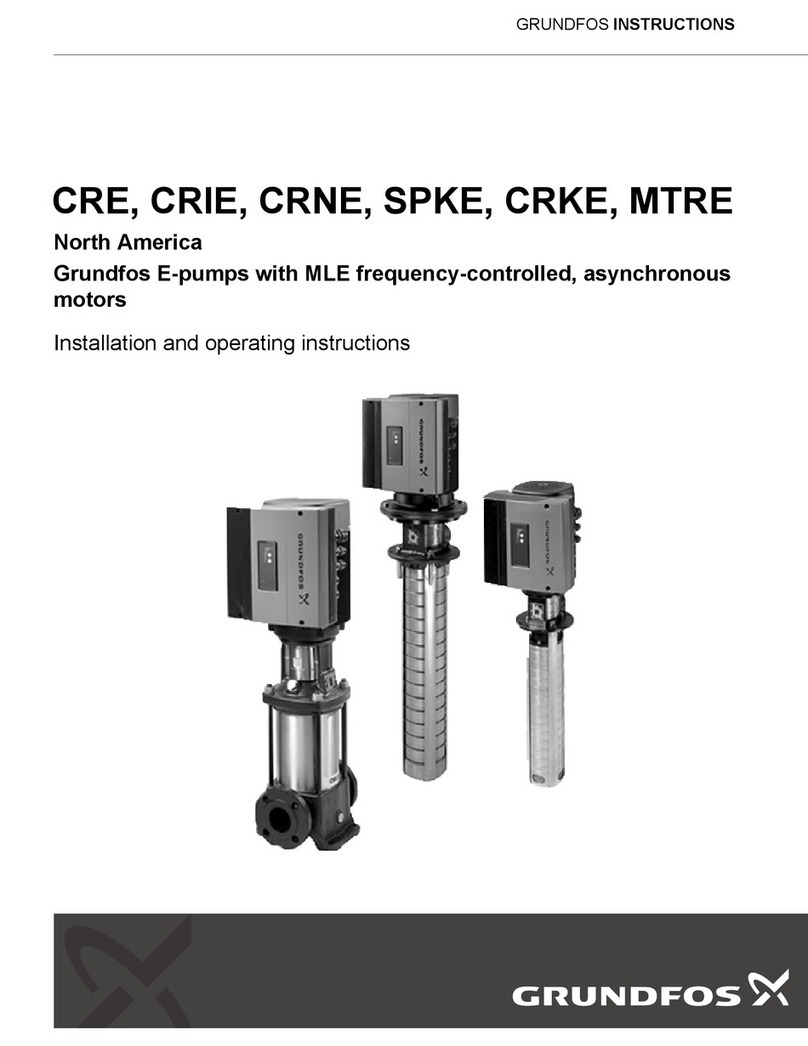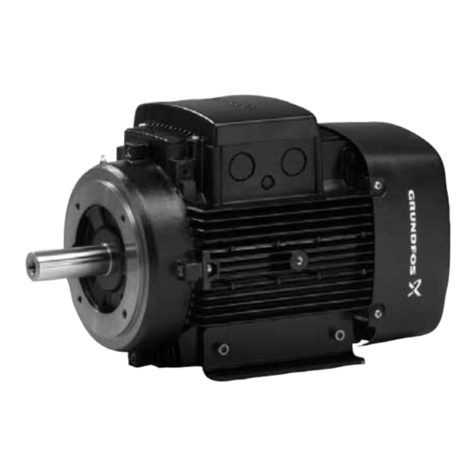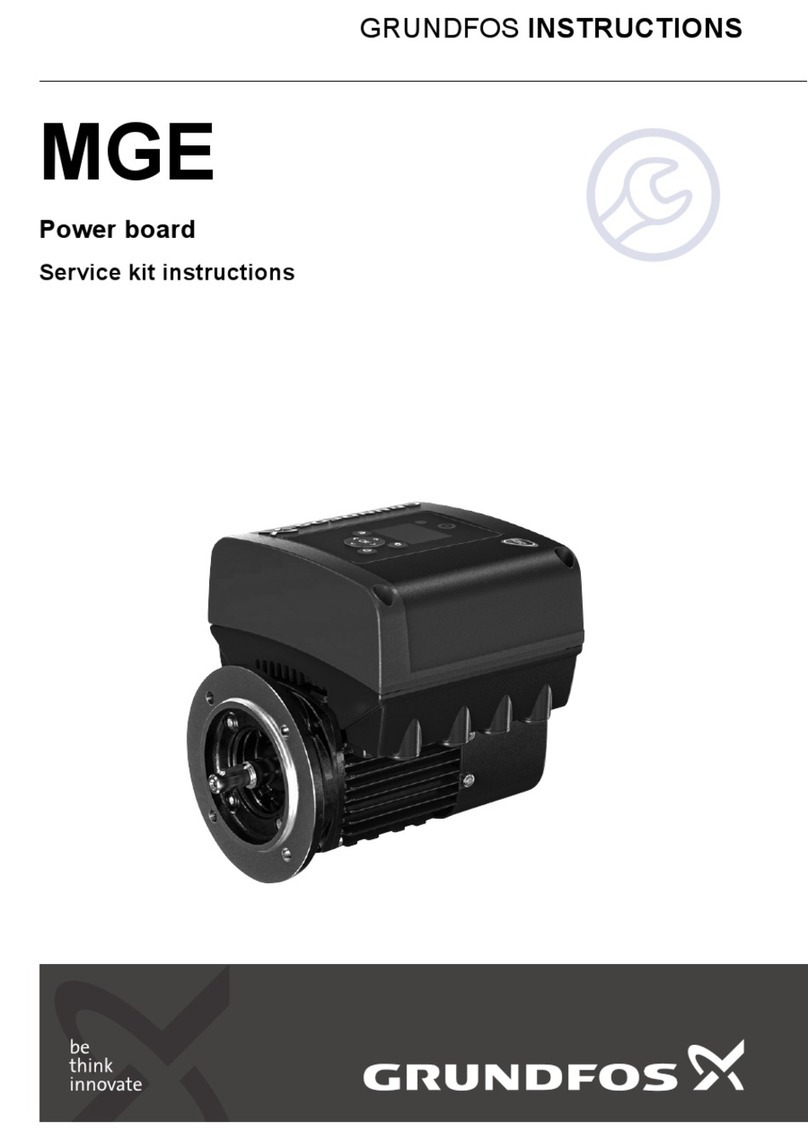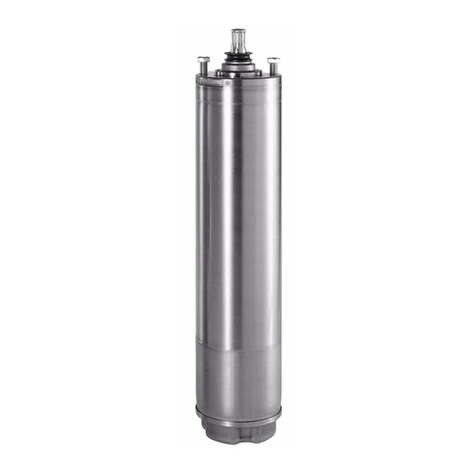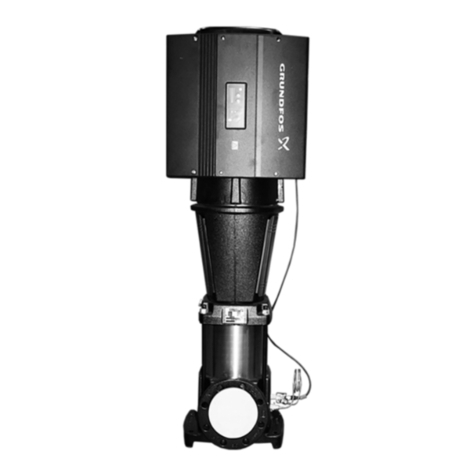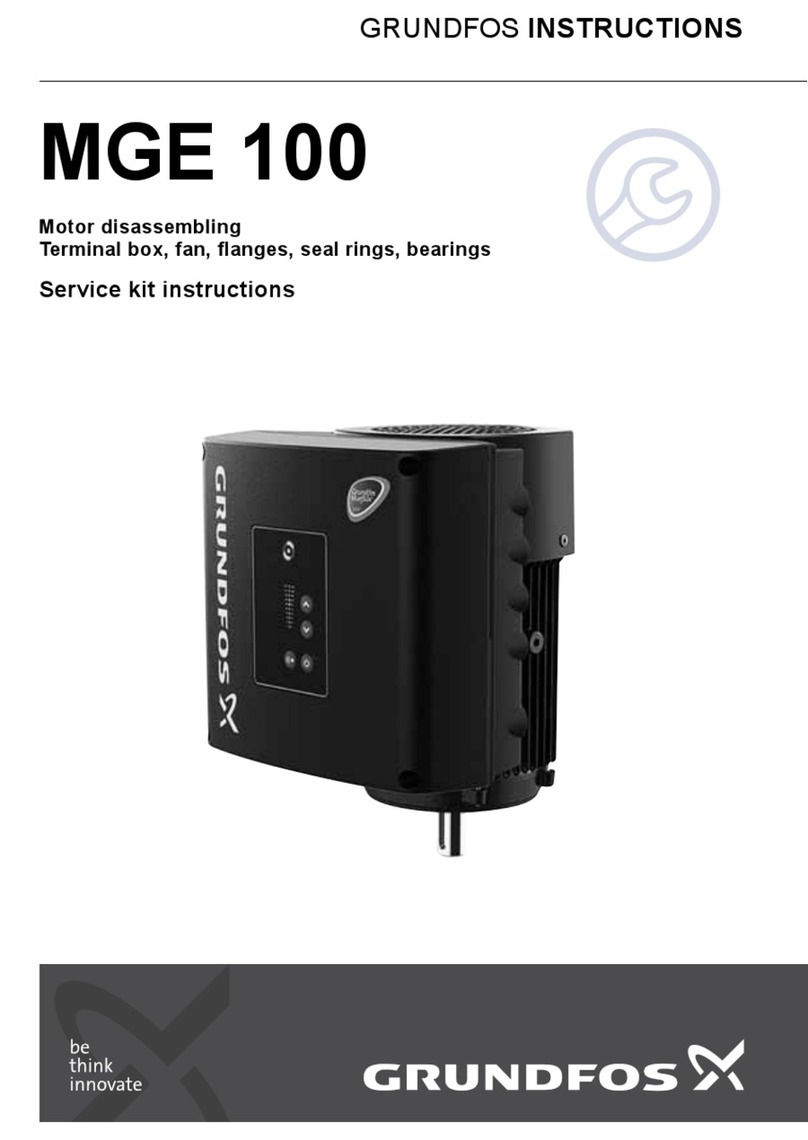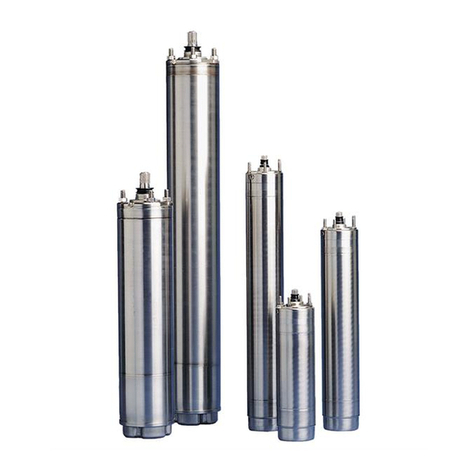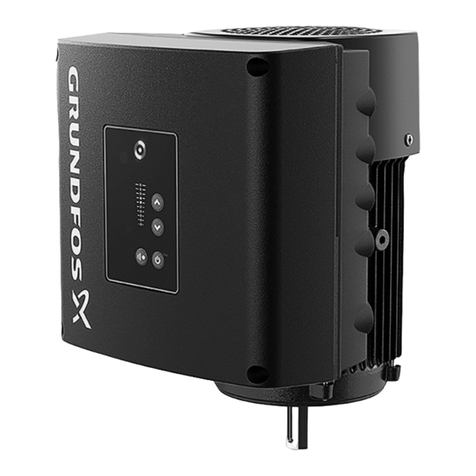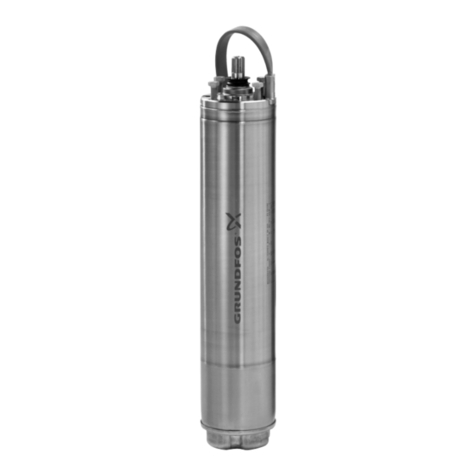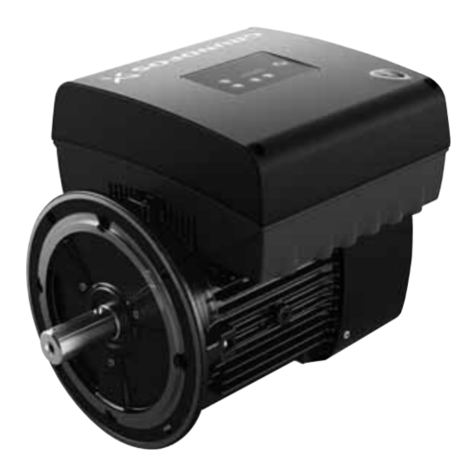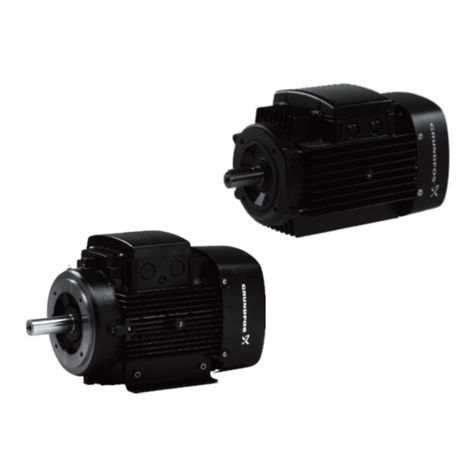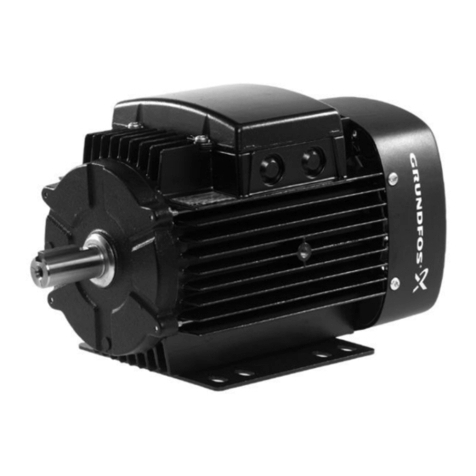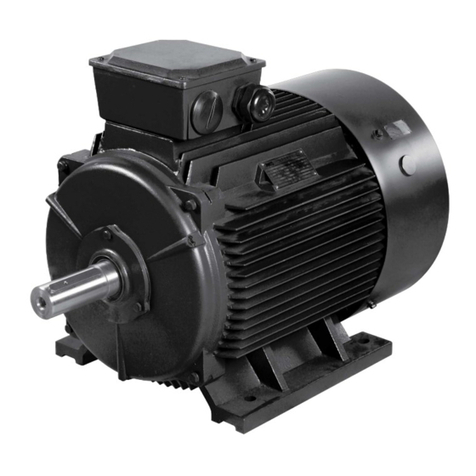
5. Mechanical installation
Work on the electric machine must be
carried out when the machine has stopped
and been disconnected from the power
supply (including auxiliary parts, such as
anticondensation heaters).
5.1 Lifting the product
Before using the lifting rings, make sure
they have been tightened.
The lifting rings are big enough to bear the
weight of a single motor, therefore they
must not be used to lift the equipment
connected to the motor.
In environments where the temperature is
below -20 °C, these lifting rings should be
used with caution as they could break at
low temperatures and cause damage.
5.2 Assembling the connecting device
Fitting pulley, coupling or gear to the motor
shaft must be carried out with care to
ensure no damage is caused to the
bearing.
Fitments not balanced properly can cause
anomalous vibrations during operation that
jeopardizes the proper working of the
motor and drastically reduces its life.
1. Remove the protective paint finish from the shaft
and smear with oil.
2. Fit the device, heating before fitting, if possible, to
ensure an easy fit.
Any component that is assembled on the motor shaft
must be accurately balanced. The motor is normally
balanced using a half key and the letter H is punched
on the shaft.
5.3 Direct connection
Use couplings that have been made and balanced
perfectly to align the motor shaft and the operating
machine precisely.
Inaccurate alignment may cause vibrations
and damage to the bearings or breakage
of the shaft end.
5.4 Connection by means of pulley
Check that alignment with the pulley of the operating
machine has been carried out perfectly. The tension
of the belts must be enough to avoid slipping.
Excessive tension of the belts causes harmful radial
loads on the motor shaft and bearings, reducing their
life.
Excessive tension of the belts causes
harmful radial loads on the motor shaft and
bearings, reducing their life.
We recommend assembling the motor on
belt-tensioning slides in order to accurately
adjust the tension of the belts.
A connection with belts must be such as to avoid
accumulation of static charges in the moving belts
which could cause sparks.
5.5 Connecting to the power supply
Use cables with sufficient section to bear
the maximum current absorbed by the
motor, avoiding overheating and/or drops
in voltage.
Connections to the terminals must be
made in order to guarantee safe distances
between live uncovered parts.
Earthing is through the screw located
inside the terminal box. Earths must be of
sufficient size and installed according to
relevant standards. The area of contact of
connections must be cleaned and
protected against corrosion.
When the cable inlet is made by means of
a cable gland, it must be chosen properly
in relation to the type of equipment and
type of cable used. The cable gland must
be tightened so that the retaining rings
create the pressure necessary to:
• prevent transmission of mechanical
stress to the motor terminals
• ensure the mechanical (IP degree)
protection of the terminal box.
1. Connect the cables to terminals by following the
instructions on the nameplate or on the diagram
included in the terminal box.
2. Make sure that the terminal nuts are tightened.
5.6 Connection of auxiliary parts
Thermal protection
Check which type of protection is installed before
making connections. If thermistors (PTC) are used, it
is necessary to utilise a suitable relay.
8
English (GB)
